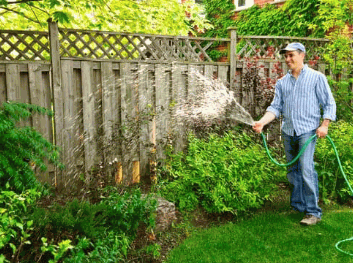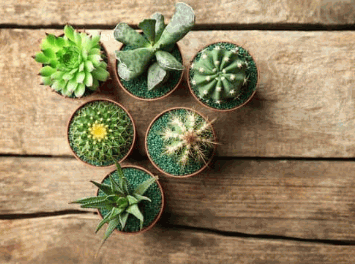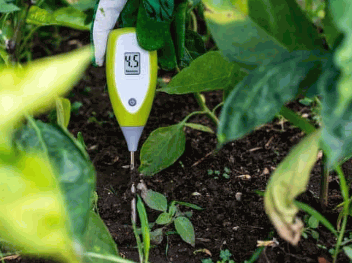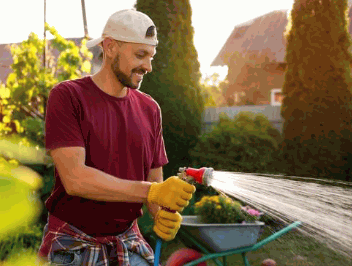To understand how often low-maintenance plants need to be watered, delve into the introduction. Gain insights into the characteristics and behavior of these plants that make them easy to care for. Learn about the sub-sections that will provide a solution to your watering needs.
Explanation Of Low-Maintenance Plants
Low maintenance plants? Perfect! Busy schedules? No worries. Little experience? No problem. These plants can thrive in various conditions and can even handle neglect. Plus, they require minimal pruning and grooming. They’re even resistant to pests and diseases, so no need for pesticides. Plus, there are health benefits too! So why not transform your home or garden with low-maintenance plants and enjoy the joy and tranquility they bring? It’s effortless beauty at its finest!
Importance Of Watering For Plant Health
To ensure healthy growth and vitality of low-maintenance plants, understanding the importance of watering is essential. In order to address this, we will delve into how water affects these plants. Discover the role of hydration in supporting the overall well-being and resilience of low-maintenance plants with our exploration.
Explore further: Gardening Tools And Their Uses

How Water Affects Low Maintenance Plants
Water is vital for low-maintenance plants. It’s like their lifeblood, nourishing every cell. Without it, they won’t thrive and may even die.
Water helps in many ways:
- Photosynthesis – it acts as a medium for nutrients, allowing glucose and oxygen production.
- Temperature control – Transpiration releases heat through leaves to prevent overheating.
- Turgor pressure – it gives structural support to stems and leaves.
Ancient civilizations knew this already. The Hanging Gardens of Babylon had irrigation systems to keep their plants healthy. They realized that watering was essential for vibrant vegetation.
Factors To Consider For Watering Low-Maintenance Plants
To ensure proper watering of low-maintenance plants, it is essential to consider various factors. This section focuses on understanding these factors by exploring the types of low-maintenance plants, seasonal watering requirements, and soil moisture levels. Each sub-section offers valuable insights into how these factors play a crucial role in maintaining the optimal water levels for your low-maintenance plants.
Types Of Low-Maintenance Plants
Low-maintenance plants are great for your garden or indoors! They need little care and attention – perfect for busy people or those who struggle with gardening. Here are some examples to consider adding:
- Succulents: Desert plants that store water in their thick leaves and stems. Water them infrequently and they can survive long periods without attention.

- Cacti: Like succulents, these survive in arid conditions. Only needs occasional watering.

- Pothos: Houseplant with trailing vines and heart-shaped leaves. Tolerates many lighting conditions. Water when the top inch of soil is dry.

- Snake Plant: Also called Mother-in-Law’s Tongue. Virtually indestructible. Low light and needs very little water.

- Aloe Vera: Medicinal benefits, minimal care. Bright, indirect light and deep, infrequent watering.

- ZZ Plant: Glossy, dark green leaves. Good for low-light environments. Can survive without water. Prefer temperatures of 65-79°F (18-26°C).

Other things to think about when caring for these plants: use well-draining soil to avoid root rot, especially for succulents and cacti. Provide good airflow around the plants to stop mold and mildew.
Seasonal Watering Requirements
Check your low-maintenance plants’ water needs during each season! Here are some guidelines to follow:
- Spring: As temperatures rise, plants require more water. Make sure to water them adequately.
- Summer: It is hot and dry, so water deeply and less frequently to ensure plants receive enough hydration.
- Fall: With cooler temperatures, plants need less water. Adjust your watering schedule accordingly.
- Winter: This is a time of dormancy for plants. Reduce the frequency of watering, but do not let the soil completely dry out.
- Rainfall: Take into account the amount of rainfall your area receives and adjust your watering routine accordingly.
Remember, the specific needs of each plant type may vary. It is advisable to research or consult a horticulturist for more specific information.
Other factors such as soil drainage, plant size, and sunlight exposure also affect watering needs. Assess these regularly to ensure optimal care for your plants.
Stay vigilant and adjust your watering routine accordingly to keep your plants healthy and thriving!
Soil Moisture Levels
Understanding soil moisture levels is a must for gardening with low-maintenance plants. It’s important to remember that different plants have different moisture requirements. Some need less water, while others need more. Monitoring these levels is key to avoid over or under-watering.
Methods such as moisture meters and visual inspection can help to assess soil moisture levels. Still, achieving the right balance can be tricky.
By understanding soil moisture levels and tailoring watering practices, gardeners can create a perfect growing environment for their plants without wasting water or causing any harm.

Recommended Watering Frequency For Low Maintenance Plants
To ensure your low-maintenance plants thrive, discover the ideal watering frequency. Understand the recommended guidelines for different plant types and learn how to make adjustments based on environmental conditions. General guidelines for different types of low-maintenance plants, and adjustments based on environmental conditions are the key.
General Guidelines For Different Types Of Low-Maintenance Plants
Low-maintenance plants have specific guidelines for watering, to keep them fit and healthy. It all depends on the type of plant. Here are some tips to bear in mind:
- For desert succulents and cacti, water a little – wait until the soil is totally dried out.
- Ferns and orchids are tropical and like humidity. Therefore, water frequently, but do not saturate the soil.
- Plants like lavender and rosemary can handle dry conditions – water only when the top inch of soil is dry.
- Native plants’ needs vary – research each species or ask a horticulturist for directions.
Plus, there are special details for different plants. Keep in mind that overwatering is worse than underwatering.
So, to look after your low-maintenance plants:
- Make sure there’s good drainage in pots/beds – no waterlogging.
- Water deeply but not too often, so roots can absorb moisture.
- Consider using rainwater or gray water to irrigate.
- Monitor weather conditions and adjust watering.
By doing this, you can keep your plants healthy while conserving water. It’s all about understanding their needs and providing the right care.
Adjustments Based On Environmental Conditions
Make adjustments to your watering frequency, depending on the environment. Here’s a table to help:
| Environment | Adjustments |
|---|---|
| High Temp. | Increase watering frequency due to evaporation. |
| Low Humidity | Increase watering frequency for moisture. |
| Rainy Season | Reduce watering frequency due to rain. |
| Windy | Increase watering frequency due to evaporation. |
Each plant species needs different care. Research individual needs, or consult a professional horticulturist for advice.
Don’t neglect your plants! Proper hydration keeps them alive and looking great. Create an oasis of greenery in your space by giving your plants the love they deserve. Take action now!
Signs Of Under-Watering And Over-Watering Low Maintenance Plants
To ensure the optimal health of low-maintenance plants, it’s important to be aware of the signs of under-watering and over-watering. Recognizing dry soil and thirsty plants, as well as identifying symptoms of waterlogged and stressed plants, are key solutions for maintaining the right watering balance.
Recognition Of Dry Soil And Thirsty Plants
Dry soil can cause withered leaves, which look droopy or wilted. Additionally, these leaves may feel brittle or crispy to the touch. On the other hand, over-watering can lead to foliage turning yellow, due to excessive moisture and poor drainage.
Different plants have different water requirements. So, it is necessary to observe individual plant needs for their overall well-being.
The ancients knew that proper hydration was essential for plant survival. They observed changes in leaf color and texture and adjusted their watering practices as needed. This knowledge has been passed down, helping gardeners care for their plants.

Identifying Symptoms Of Waterlogged And Stressed Plants
Waterlogged and stressed plants have special signs that show their state. These can help you know if your plant needs more or less water.
- Yellowing leaves – A symptom of waterlogged and stressed plants is discolored leaves. Too much moisture stops the nutrients from getting into the plant, causing yellowing.
- Wilting – Wilting usually means the plant needs more water, but it can also mean it has too much water. When roots stay in water too long, they don’t get oxygen, which causes wilting.
- Root rot – Too much water leads to root rot. You can tell if your plant has root rot by the bad smell from the roots. The roots get soft and discolored, and the plant’s health is affected.
- Fungus growth – Excess moisture helps fungus to grow. If you see mold or fungus on the soil or leaves, it could mean your plant has too much water.
Also, watch for stunted growth and no new shoots. This suggests your plant isn’t getting enough water.
It’s important to note that most plant problems come from water issues. A study by The Royal Horticultural Society (RHS) found that over 90% of plant problems are related to water. So, it’s essential to recognize these symptoms to keep your plants healthy.
Best Practices For Watering Low-Maintenance Plants
To ensure the optimal care for low-maintenance plants, address their watering needs using best practices. Consider the time of day to water, methods of watering, and monitoring water usage as effective solutions. These sub-sections offer valuable insights into maintaining healthy, thriving plants while minimizing the efforts required for their upkeep.
Time Of Day To Water
Watering your low-maintenance plants at the right time is essential for their growth and health. Here are three things to remember:
- Morning is best. Watering then gives the plants time to soak up the moisture before the sun gets too hot, reducing evaporation. Plus, it helps stop fungal diseases by letting leaves dry during the day.
- Avoid watering during the hottest part of the day, usually midday. The heat can cause water droplets to act like magnifying glasses, burning delicate tissues and leading to leaf burn. Also, much of the water may evaporate before reaching the roots.
- Evening is another suitable time, especially if mornings are not possible due to work or other commitments. But watch out for overwatering at night, as extra moisture on leaves overnight can cause fungal growth.
Different plants have varying water needs and may need specific watering times. Ask a gardening expert or look up care guides for your plants.
Pro Tip: Get an automated irrigation system with a timer. It will make sure your low-maintenance plants get regular and timely watering, no matter where you are.

Methods Of Watering
Watering low-maintenance plants requires special techniques for proper growth and health. Comprehend these strategies and you can give plants the needed moisture, without over or under-watering – leading to a flourishing garden!
- First, look at the watering plan. Usually, low-maintenance plants require less regular watering than other types. Monitor the soil moisture before watering, and only proceed if it is dry to the touch.
- Next, use deep irrigation techniques. This includes giving plants deep, but infrequent, water. It helps roots grow deeper and withstand droughts.
- In addition, use efficient systems such as drip irrigation or soaker hoses. These methods provide a regulated flow of water to the roots, preventing excessive evaporation.
- Finally, mulching is great for low-maintenance plants. It reduces water loss and hinders weed growth. Put a layer of organic mulch around the base of plants to help keep moisture in the soil.
Remember to not miss some specific details when watering low-maintenance plants. For instance, avoid overhead sprinklers as they can cause diseases if foliage is wet for too long. Also, be mindful of feeding schedules – over-fertilizing can cause too much leaf growth and not enough root development.
Monitoring Water Usage
Monitoring water usage for low-maintenance plants? Here are some tips:
Column 1: Watering schedule. Establish a routine that meets the needs of different plants.
Column 2: Soil moisture levels. Measure the moisture content in the soil to avoid over or under-watering.
Column 3: Visual cues. Look for signs like leaf color, wilted foliage, or drooping stems.
Column 4: Watering methods. From cans to drip systems, know how to deliver water efficiently.
Plus, use rain gauges and weather forecasting. Moisture meters and sensors can help too.
Environmental factors like temp, humidity, and sunlight affect water needs.
Start monitoring water usage today for a thriving garden. You’ll be rewarded with a beautiful oasis!

Conclusion
Low-maintenance plants need less water than other types. But, this doesn’t mean they should be ignored. Check soil moisture levels by sticking a finger in up to two inches. Dry soil means it’s time to water. Too much or too little water can both be bad.

